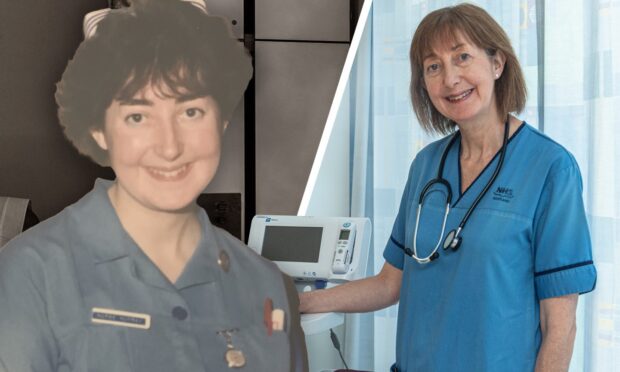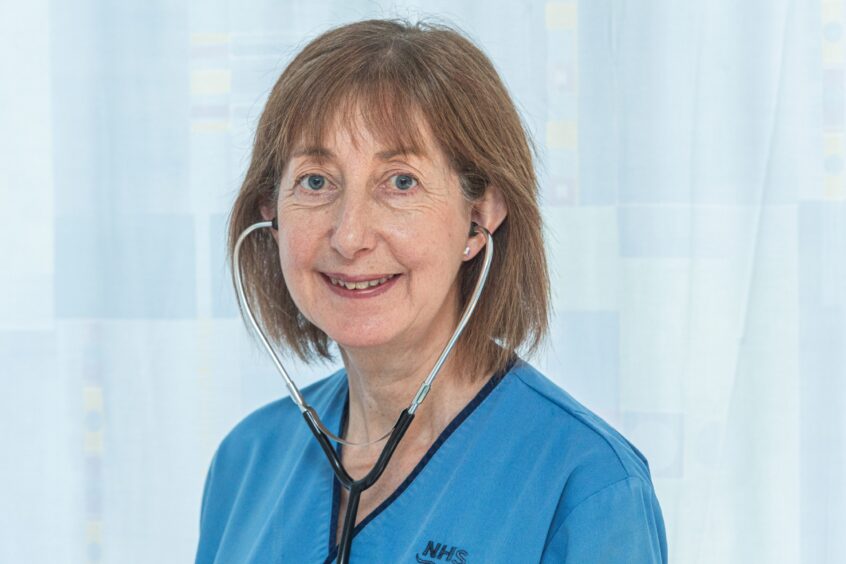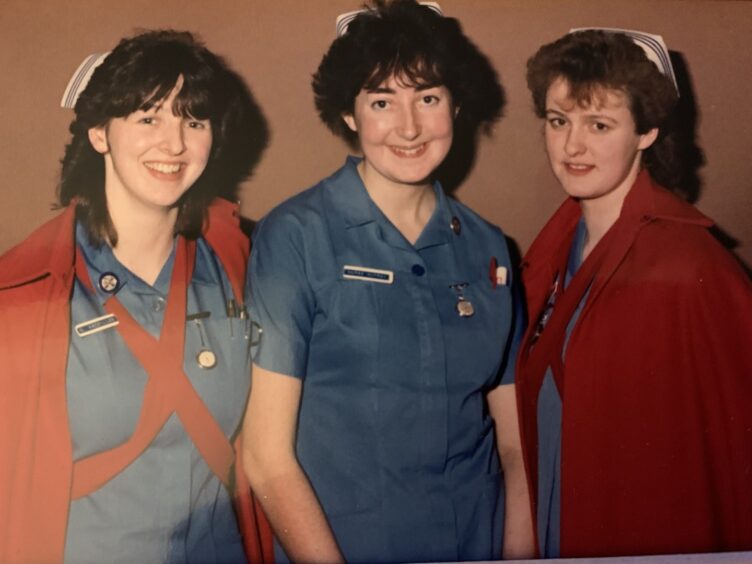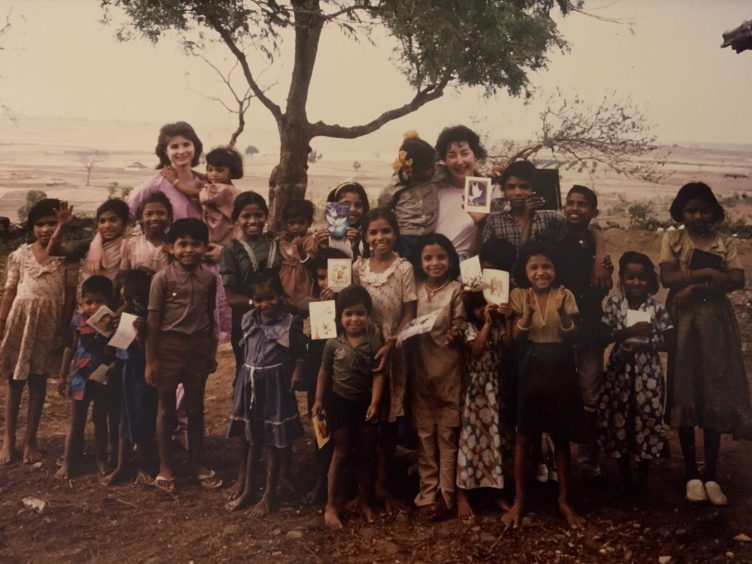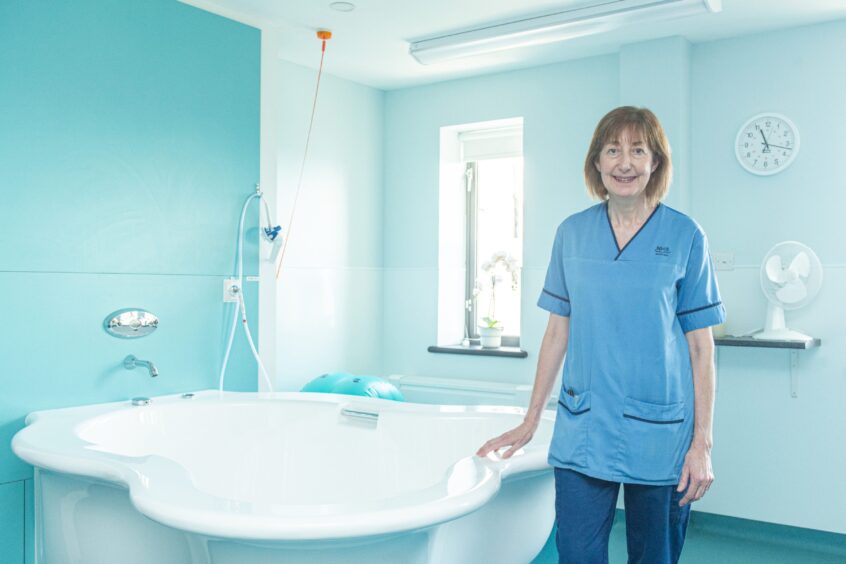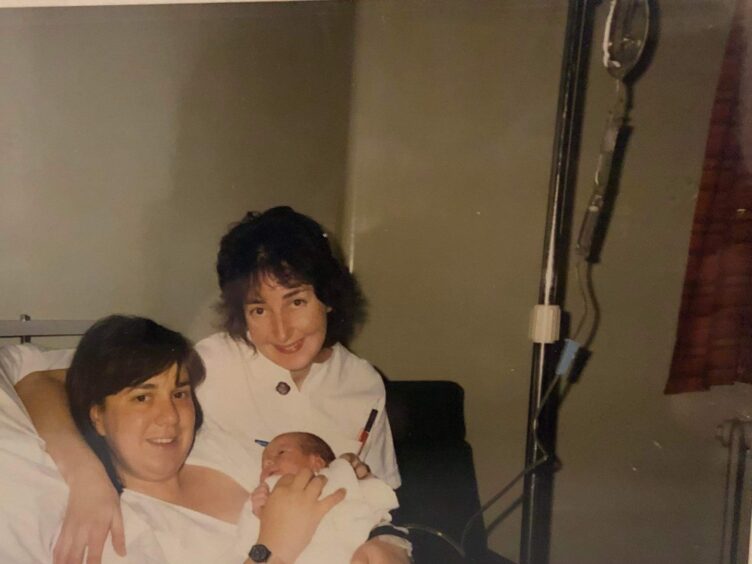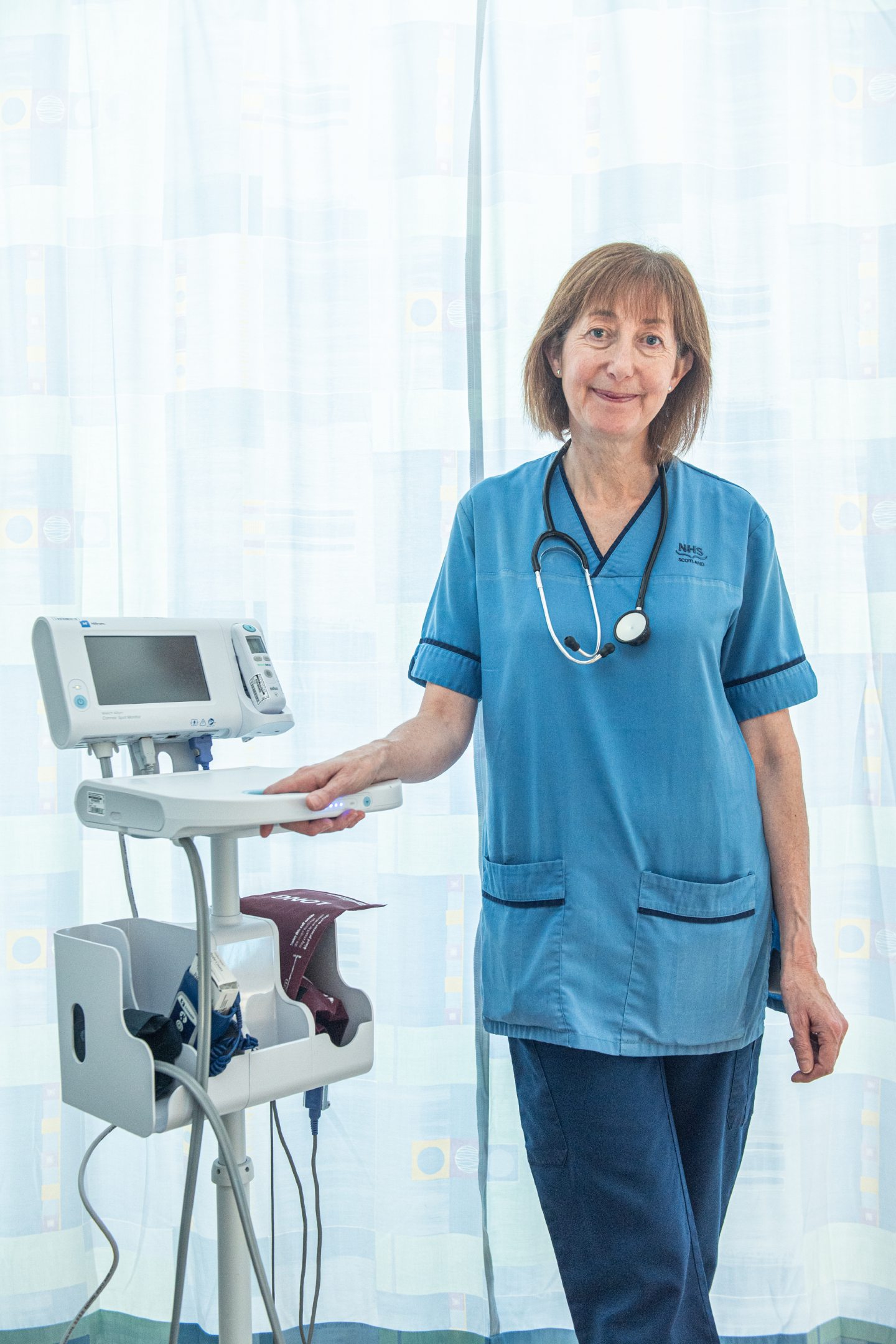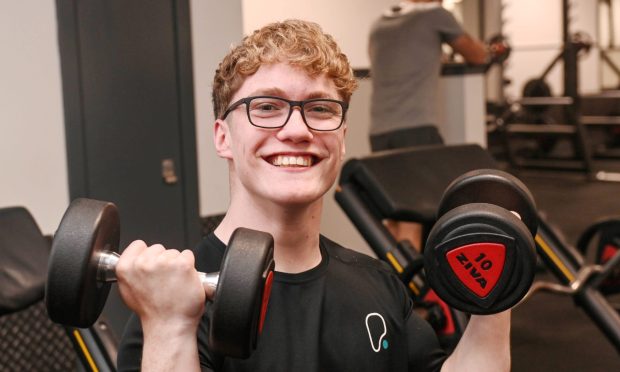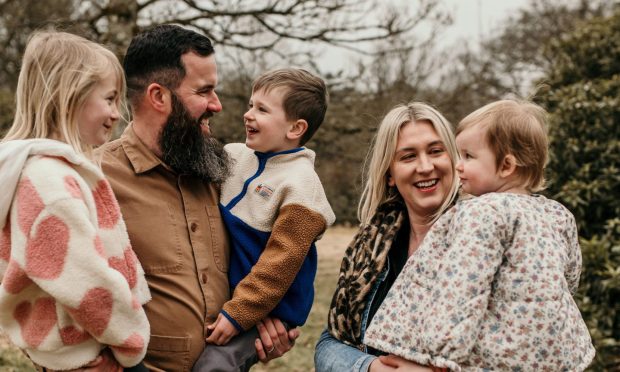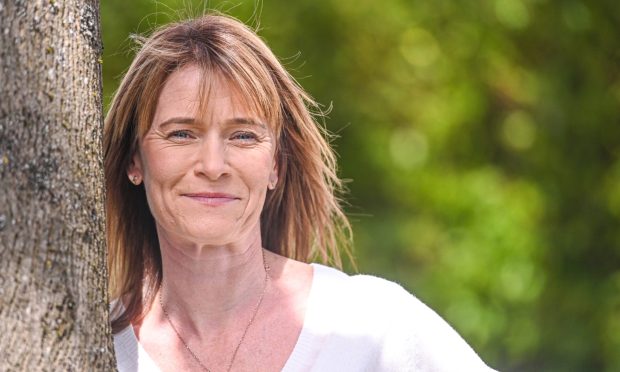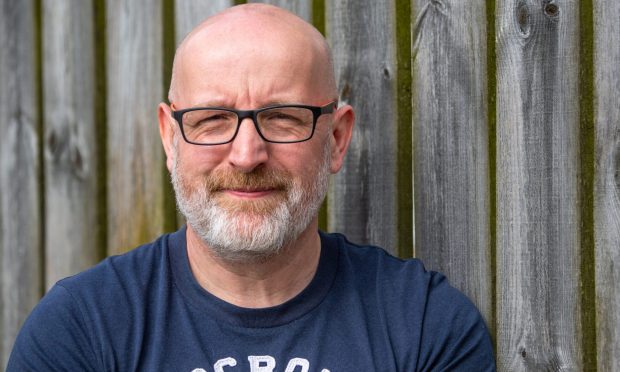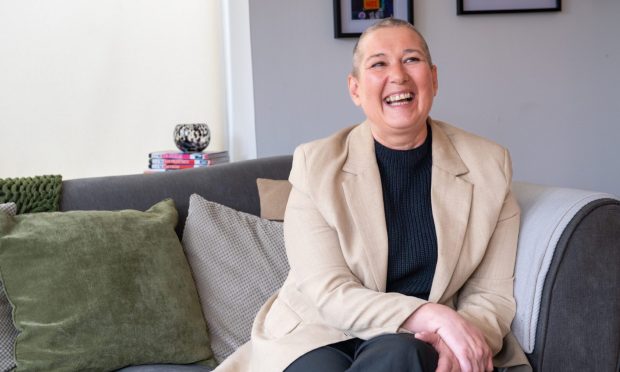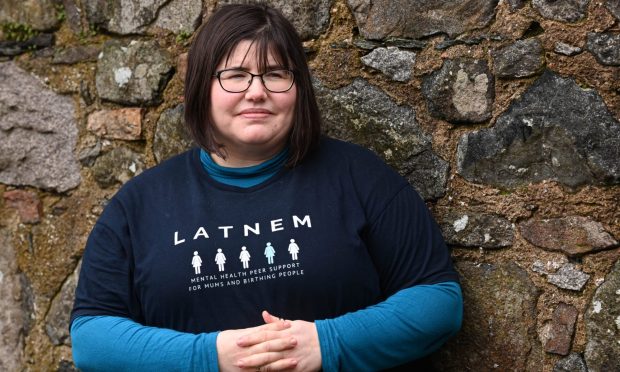Maggie Macleod thought it was the right decision when she retired from her job as a midwife at Dr Gray’s Hospital in Elgin.
It was the middle of lockdown and the Western Islander who’d spent almost half of a near 40-year career in Moray was ready to call it a day.
But, when lockdown ended, Maggie had second thoughts.
“I always said to myself, if I ever lose the feeling of delight of being at my work, the feeling of privilege of being with people at the most important time in their lives I would stop,” she says. “And I’d not lost that yet.
“So here I am.”
Maggie’s part in the NHS Retire and Return scheme
Last year, Maggie returned to midwifery at Dr Gray’s, restarting a career she thought was behind her.
The 58-year-old’s return is part of the NHS’s Retire and Return scheme, which started in April last year and is an effort to entice experienced heads back to work amid staffing shortages that have affected Dr Gray’s.
However, for Maggie, it was ultimately down to her passion for a job she always felt honoured to have.
“It’s a real privilege,” she says. “One day you could be looking after someone who has gone through a still birth and the next day you are looking after a family through their birth.
“And each time I still am glad to be part of it, even in the sad times.”
How Maggie became a Pelican Badge nurse
Even before she came back, Maggie’s NHS career has been a rollercoaster ride.
She trained as a nurse at Edinburgh Royal Infirmary (ERI), travelling down from her home on the Isle Lewis in 1983.
She says it was well-known on Lewis at the time that Edinburgh had the best education for nurses.
It was a dream of hers to get her own Pelican Badge, a reward for ERI nurses a year after qualifying as staff nurses.
Maggie was one of the last ERI intakes to get a Pelican badge — the scheme was disbanded — but she still wears it with pride.
“If I say to anyone now that I’m a Pelican nurse, they say, ‘What?’ Nobody knows it. But I’m still in a group called the Pelicans League, and people still meet up in Edinburgh.”
Maggie leaves her mark in India
One of Maggie’s first tastes of midwifery was a four-week placement in central India, where she and a friend delivered babies at a mission hospital.
It was an eye-opening experience for her, and she left her mark in more ways one.
“There is a gentleman somewhere in India who is named after me,” she says. “I delivered him, and his parents wanted a name that sounded like mine, so they called him Magnus.
“He’s out there somewhere.”
Maggie worked for NHS Lothian until 15 years ago, when she moved to Nairn where she still lives with husband Murdo. The couple have two children, Angus and Kirsty.
The move north meant a switch from working in a large maternity unit in Edinburgh with about 6,000 births a year to the smaller one at Dr Gray’s in Elgin, which has about 1,000.
Maggie says she loved working in Edinburgh but has learned much more at Dr Gray’s, where midwives can often accompany the mother for the entire birth.
“You could start off a 12-hour shift with an induction, and then take them down to the labour ward where you deliver them,” Maggie says.
“Then you take them back up and look after them and their baby post-natally. All in one shift. It’s really satisfying.”
‘They won’t get rid of me’
Since returning to work, Maggie’s responsibilities have changed. She no longer works night shifts or weekends, and only for three days a week.
Meanwhile, the Retire and Return scheme allows her to continue drawing her pension on top of her NHS pay. And she is still adding to her pension pot.
“It’s not as much as I would have earned normally, but it’s enough, it’s fine. And I’m enjoying the hours.
“They won’t get rid of me.”
The difference a Nairn midwife can make at Dr Gray’s
Another motivation to keep working is the hard-won experience she can pass on to younger nurses.
At Dr Gray’s, Maggie works with a wide range of staff. But she makes drums one thing into them all.
“You have to look on patients as a whole person,” she says. “You can learn so much from talking to a person.”
That lesson, says Maggie, is one thing that hasn’t changed in her 40 years with the NHS.
But there is plenty that has changed — often for the better.
“Parents now have more of a choice,” she says. “It’s such a huge stress in someone’s life when you go into pregnancy, it’s just nice to be able to feel you can discuss all sorts of different birthing options.”
Maggie mentions the water birth facility at Dr Gray’s, which she says is fantastic for mothers. It’s also great for midwives — instead of having to support babies as they come out, they can let the water do the lifting.
However, she remembers midwives casting an uneasy eye at water birth facilities when they were first introduced into maternity units.
“If anything, we were terrified at the thought of it,” she laughs. “It didn’t seem natural.
“But that was maybe a medicalised way of thinking about it. In fact they are a brilliant way to deliver. It’s great for pain relief and it’s quite cool seeing these babies born in the water.”
When Maggie forgot she wasn’t a midwife… when her own son was born
Her most special deliveries, however, have been her own.
She asked a friend to midwife the births of children Angus and Kirsty.
But old habits die hard. When the pediatrician came in to check her son, she left the room, because that’s what midwives usually do at that moment.
“I remember walking out the door when he came in and he said, ‘Where are you going?’ Maggie recalls.
“I suddenly remembered, Oh, yeah, I have to stay here.”
